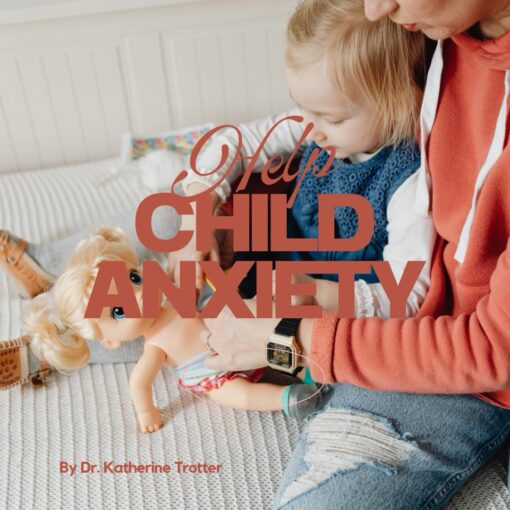 Do you know about the amazing technique of Structured Doll Play? It’s a fantastic way to help your little ones learn and understand better! Children learn best through actual experiences, and sometimes words alone may not be enough to fully comprehend things. But, by using tangible objects, your kids can better conceptualize things, understand that there is a solution, and realize that things will work out.
Do you know about the amazing technique of Structured Doll Play? It’s a fantastic way to help your little ones learn and understand better! Children learn best through actual experiences, and sometimes words alone may not be enough to fully comprehend things. But, by using tangible objects, your kids can better conceptualize things, understand that there is a solution, and realize that things will work out.
This technique is particularly helpful for parents whose kids are experiencing anxiety, emotional symptoms, separation issues, or changes in their lives. By presenting children with a simple story and a concrete representation of the situation, the structured doll play technique aims to help parents provide the best possible learning environment for their children.
Structured doll play is most useful for children aged 2-6 who are showing signs of distress or anxiety in a particular situation. As a parent, you get to direct the play by telling a simple story to your child that describes real-life events. The story must be straightforward, have a clear beginning, middle and end, and be narrated positively. So, give it a try and see your child blossom into a confident and happy little human being!
Picture this – you’re about to take your little one on a trip to Grandma’s house, but the mere thought of it is making them anxious. What do you do? Well, we’ve got an exciting solution for you!
Tell your child a story with dolls that represent you, your partner, and your child. As you narrate the story, act out the most important parts of the trip with the dolls, and don’t forget to add sound effects to make it more fun! Once you’ve told the story a few times, it’s your child’s turn to take the lead and tell you the story.
Now, let’s dive into a sample story to give you an idea of how to get started. Meet Kara, the doll that represents your child, and the Mommy and Daddy dolls. They’re packing their bags and getting ready to go to the airport. Mommy tells Kara that it’s time to go, and Kara heads out to the car. Meanwhile, Daddy packs all the bags into the car (making lots of car noises).
Once they reach the airport, Daddy asks Kara to hold his hand as they cross the street, and then they board the airplane. Kara tries to buckle her seatbelt, but it’s too tricky, so Mommy helps her out. They all fly to Chicago (extending their arms and imitating flying sounds).
Finally, they land in Chicago, and Grandma comes to pick them up in the car. They drive to her house (making lots of car noises), and once they arrive, they all eat dinner and head off to bed. The next morning, Kara wakes up to find Mommy still sleeping, so she goes to wake her up with lots of kisses and hugs.
That’s it – a fun and engaging story that will help your child see the trip to Grandma’s house in a more positive light. By combining words and concrete objects, your child will be able to retain the story better than through verbal explanations.
Let’s learn how to create a fantastic story that will capture your little ones’ imagination! Follow these easy steps and helpful hints, and you’ll be on your way to becoming a storytelling pro in no time!
Step 1: Start with an exciting title that will pique their interest.
Step 2: Use the actual names of the characters in your story. It makes it more personal and engaging.
Step 3: Tell the story in a storytelling manner, always using the doll’s name versus saying “you.” This will help your little ones to connect better with the characters in the story.
Step 4: Create a relaxed and comfortable setting for telling the story. Choose a time that is convenient for both you and your child. You can even use stuffed animals as characters in your story!
Step 5: Focus your story on one theme, and don’t exceed five minutes. Keep it simple, sweet, and to the point.
Helpful Hints:
• Make it fun! Use silly voices, dramatic pauses, and gestures to keep your little ones engaged.
• Only include elements in the story that you have control over. It will help your little ones to imagine and relate better.
• Focus on the child’s feelings. For example, “Grandma doll kisses and hugs Kara, saying, ‘I am so excited you are going to stay at Grandma’s house.'” Emphasize the characters’ emotions.
• Make the story realistic and optimistic. Children love happy endings!
• End the story on a positive note that you can control. It will leave your little ones feeling happy and satisfied.
So, what are you waiting for? Grab your favorite doll, stuffed animal, or action figure, and start creating a magical story that will leave your child spellbound!
